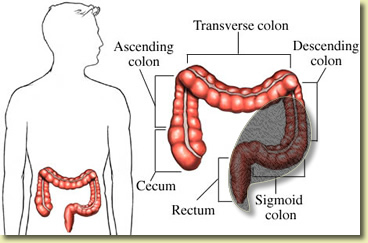

| Proctosigmoidoscopy |
Proctosigmoidoscopy (Proctoscopy,Sigmoidoscopy) is an internal examination of the lower large bowel (colon), using an instrument called a sigmoidoscope. The sigmoidoscope is a small camera attached to a flexible tube. It is inserted into the colon to examine the rectum, and the sigmoid and descending portions of the colon.
How the test is performed
During the test, you wear a hospital gown so that the lower half of your body is exposed. You are positioned on your left side with your knees drawn up toward your chest.
A gastroenterologist (a specialist in diseases of the digestive system) will gently insert a gloved and lubricated finger (or fingers) into the rectum to check for blockage and to dilate the anus. This is called a digital rectal examination.
Following the digital rectal exam, the sigmoidoscope will be inserted. This flexible fiberoptic tube is about 20 inches long.
The scope is gently advanced into the colon. Air is introduced into the scope to aid in viewing. The air may cause the urge to defecate. As the sigmoidoscope is slowly removed, the lining of the bowel is carefully examined. A channel in the scope allows for the passage of forceps for biopsies or other instruments for therapy.

How the test will feel
There will be pressure when the scopes or fingers are introduced into your rectum. There will be a feeling of the need to defecate during the procedure. There may be some bloating or cramping from distention of the bowel by air or stretching by the sigmoidoscope. Biopsies cause no discomfort.
After the test, you will expel the air that was introduced
Why the test is performed
This test can help diagnose:
This test can also be used to:
Normal Results
Normal findings show that the lining of the sigmoid colon, rectal mucosa, rectum, and anus appear normal in color, texture, and size.
What abnormal results mean
Abnormal results can indicate: